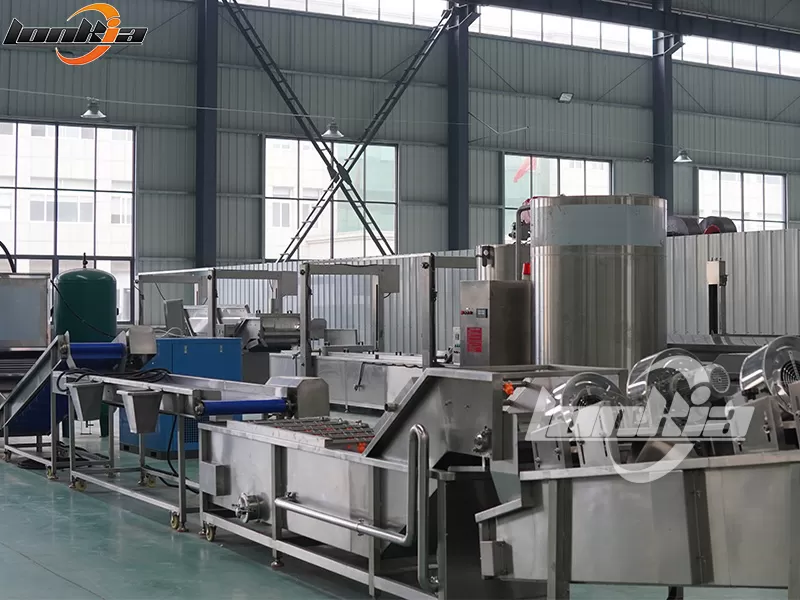During garlic processing, the peeling stage directly impacts product appearance and quality. Incomplete peeling or high clove damage rates not only reduce yield but also lead to raw material waste. With growing demand for automated processing, garlic peeling lines have become core equipment in modern food processing plants. To help customers operate equipment more efficiently, this article summarizes common issues with garlic peeling production lines and their solutions, ensuring continuous production and consistent product quality.
Issue 1: Incomplete Peeling
Root Causes:
- Insufficient or unstable compressed air pressure;
- Excessively high or low moisture content in garlic cloves;
- Blocked air nozzles on the peeling machine, reducing airflow impact force.
Solution:
Ensure air pressure remains stable within the recommended range (typically 0.6–0.8 MPa) while maintaining dry air. Regularly inspect the peeling chamber for debris blockages. Moderately drying raw materials before processing significantly improves peeling efficiency.
Issue 2: Garlic Clove Damage or Splitting
Cause Analysis:
- Excessive pressure or improper airflow direction;
- Excessive friction within the peeling chamber.
Solution:
Adjust the airflow angle and pressure to create a gentler peeling process. Regularly clean residue from inner walls to maintain a smooth chamber surface and prevent clove abrasion. Lonkia's garlic peeling line features an optimized airflow path design that effectively reduces damage rates.

Issue 3: Material Blockage or Poor Conveying
Cause Analysis:
- Residual skin fragments remain uncleaned on the conveyor belt;
- Unevenly separated or oversized raw material cloves;
- Excessive garlic accumulation at the discharge port causing pile-ups.
Solutions:
Maintain unobstructed conveying systems by cleaning skin fragments after each shift. Ensure cloves are uniformly separated before entering the peeling section. Lonkia garlic peeling line employs an automatic vibrating distribution device to effectively prevent material blockages and enhance continuous operation performance.
Issue 4: Excessive Equipment Noise or Vibration
Cause Analysis:
- Loose mounting bolts or unstable frame;
- Abnormal compressed air flow velocity.
Solutions:
Inspect and tighten all connections; adjust equipment leveling. Ensure smooth compressor operation and clean air supply. Moderate lubrication reduces noise from mechanical friction.
Conclusion: Ensuring Equipment Performance and Boosting Production Efficiency
A stably operating garlic peeling line is crucial for achieving high yields and quality. Regular maintenance, proper air pressure adjustment, and thorough cleaning systems significantly extend equipment lifespan and enhance peeling efficiency. Lonkia specializes in developing and manufacturing food processing machinery, providing customers with efficient, durable, and easy-to-maintain peeling solutions to help them maintain a competitive edge in the market.

